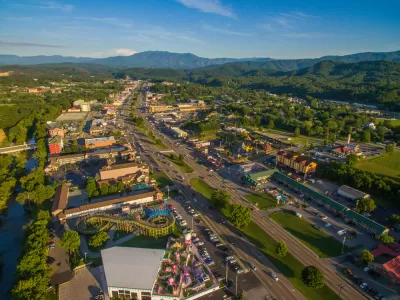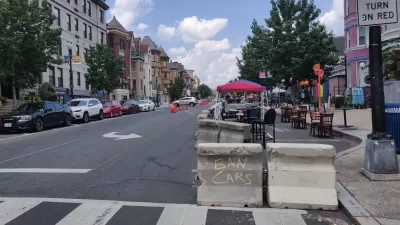It's not enough to focus solely on the design and engineering of streets when looking for ways to improve traffic safety. The fruits of the planning profession must be held to account, too.

"Academic programs in traffic engineering are often deficient in regard to paying inadequate attention to road safety concerns," according to an article by Eric Dumbaugh.
"A survey of 117 traffic engineering programs in the United States found only about one in five offer any formal instruction on traffic safety, and one may justifiably question whether there is much of any practical value contained in the few safety courses that are offered." While offering a scathing critique of the transportation engineering, Dumbaugh also notes the "significant reforms" made by the profession in the past decade, as evidenced by a large library of innovative design manuals.
Before planners start laying the blame for the country's dismal traffic safety record, again, at the feet of transportation engineers, Dumbaugh also offers this bombshell:
But these manuals call attention to what is, in my mind, an even greater safety consideration, one which has been largely ignored by professionals and academics alike. These manuals are centered on the idea that streets should be designed to address the uses and activities generated by surrounding development. It is not traffic engineers, but urban planners, who are responsible for determining a street’s developmental context. Our continued focus on the shortcomings of the traffic engineering profession leads us to ignore the manner in which planning decisions result in preventable traffic-related deaths and injuries.
Surprise: this article isn't really about engineers.
The least safe roads in communities around the United States are the direct result of local development codes, argues Dumbaugh. The concentration of retail along arterials, minimum building setbacks, and minimum parking requirements all contribute to the terrible rate of fatalities and injuries occurring on U.S. streets.
As a traffic prescription for planners to make a meaningful and effective contribution to improved traffic safety, Dumbaugh makes a comparison to the military concept of "defense-in-depth."
The effectiveness of our entire suite of defenses hinges on the policies and practices adopted by planners, such as the regional development plans that determine where future growth will occur and the zoning ordinances and subdivision regulations that govern its configuration. They establish the context in which our other layers of defense necessarily operate. And far too often, these development decisions are made with a blissful disregard of their ultimate safety consequences.
The article is also scheduled for an appearance in Transportation Alternatives’ Vision Zero Cities Journal as part of the 2020 Vision Zero Cities Conference, Oct. 19-23. The article includes more detail and a particularly cogent case study of U.S. 441, where it cuts through the city of St. Cloud, Florida.
FULL STORY: Worst Practices: How Urban Planning Fails Vision Zero

Maui's Vacation Rental Debate Turns Ugly
Verbal attacks, misinformation campaigns and fistfights plague a high-stakes debate to convert thousands of vacation rentals into long-term housing.

Planetizen Federal Action Tracker
A weekly monitor of how Trump’s orders and actions are impacting planners and planning in America.

In Urban Planning, AI Prompting Could be the New Design Thinking
Creativity has long been key to great urban design. What if we see AI as our new creative partner?

Portland Raises Parking Fees to Pay for Street Maintenance
The city is struggling to bridge a massive budget gap at the Bureau of Transportation, which largely depleted its reserves during the Civd-19 pandemic.

Spokane Mayor Introduces Housing Reforms Package
Mayor Lisa Brown’s proposals include deferring or waiving some development fees to encourage more affordable housing development.

Houston Mayor Kills Another Bike Lane
The mayor rejected a proposed bike lane in the Montrose district in keeping with his pledge to maintain car lanes.
Urban Design for Planners 1: Software Tools
This six-course series explores essential urban design concepts using open source software and equips planners with the tools they need to participate fully in the urban design process.
Planning for Universal Design
Learn the tools for implementing Universal Design in planning regulations.
Gallatin County Department of Planning & Community Development
Heyer Gruel & Associates PA
JM Goldson LLC
City of Camden Redevelopment Agency
City of Astoria
Transportation Research & Education Center (TREC) at Portland State University
Jefferson Parish Government
Camden Redevelopment Agency
City of Claremont





























